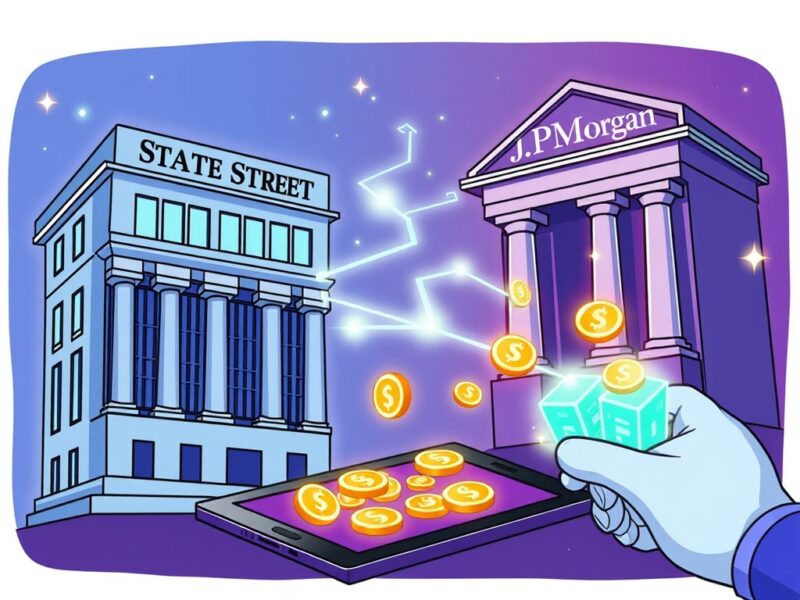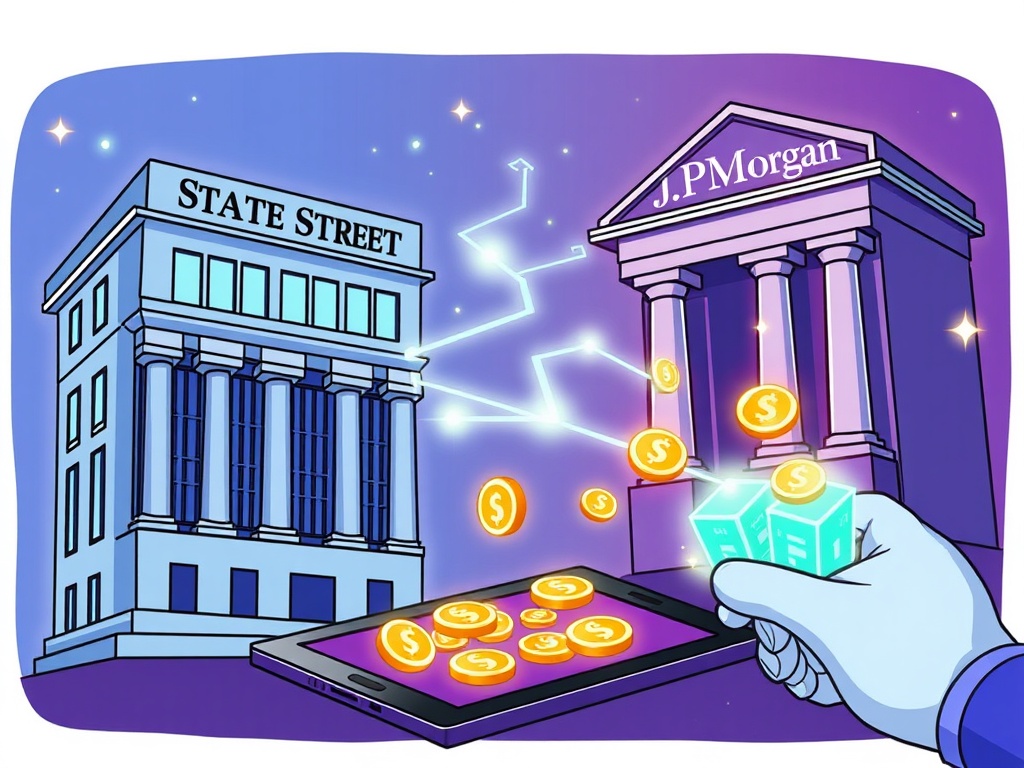Digital Debt Service: State Street’s Revolutionary Leap with JPMorgan
0
0

BitcoinWorld

Digital Debt Service: State Street’s Revolutionary Leap with JPMorgan
The world of institutional finance is experiencing a profound transformation, with blockchain technology emerging as a powerful catalyst. A groundbreaking development recently captured attention as financial services titan State Street announced its strategic adoption of JPMorgan’s Digital Debt Service. This move signifies a pivotal advancement in modernizing bond issuance and settlement, underscoring a burgeoning confidence in distributed ledger technology for mainstream financial operations.
Unlocking Efficiency: What is JPMorgan’s Digital Debt Service?
At its core, JPMorgan’s Digital Debt Service is an innovative, blockchain-based platform meticulously engineered to streamline the entire lifecycle of debt securities. This encompasses everything from the initial issuance to final settlement. It offers a demonstrably more efficient, transparent, and secure alternative when compared to conventional, often cumbersome, methods.
For prominent institutional players such as State Street, this platform provides a robust and scalable infrastructure essential for managing complex, high-volume transactions. Indeed, State Street, recognized globally as a leading custodian, has already successfully deployed the service in a real-world scenario. They skillfully acted as custodian for commercial paper transactions involving Singapore’s OCBC Bank, showcasing the platform’s practical readiness and impressive capability for handling live financial instruments with precision.
How Does Blockchain Power the Digital Debt Service?
The fundamental strength of the Digital Debt Service lies in its astute utilization of blockchain technology. This creates a shared, immutable ledger where all authorized participants can access the same, synchronized, and up-to-date information. Consequently, this drastically minimizes the need for time-consuming reconciliation efforts and significantly reduces the potential for costly errors that plague traditional systems.
Crucially, the depository record of debt securities held by State Street on behalf of its diverse clientele is meticulously maintained within a secure digital wallet via JPMorgan’s advanced platform. This provides unprecedented real-time visibility and granular control over assets, a significant upgrade for custodians.
The integration of blockchain into debt services yields several compelling advantages:
- Enhanced Efficiency: It automates numerous manual processes, dramatically accelerating transaction times from days to potentially minutes.
- Increased Transparency: All authorized parties possess the ability to view detailed transaction specifics directly on the distributed ledger, fostering trust.
- Reduced Operational Risk: Immutable records, coupled with the execution of smart contracts, inherently minimize operational risks and the potential for fraud.
- Potential Cost Savings: Streamlined processes, reduced manual intervention, and fewer errors can cumulatively lead to substantial long-term cost efficiencies.
Navigating the Future: Challenges and Opportunities with Digital Debt Service
While the adoption of Digital Debt Service presents immense opportunities, it is also important to acknowledge the evolving landscape. One primary challenge involves regulatory clarity across different jurisdictions, as digital assets and blockchain applications are still subject to developing frameworks. Furthermore, achieving widespread interoperability among various blockchain platforms and legacy systems remains a key area of focus for the industry.
However, the opportunities far outweigh these challenges. This move sets a powerful precedent for broader institutional adoption of digital assets. It encourages other financial entities to explore similar solutions, fostering a more interconnected and technologically advanced global financial ecosystem. The ability to tokenize debt, making it more divisible and tradable, could unlock new liquidity pools and investment avenues.
The collaboration between State Street and JPMorgan also highlights a crucial trend: leading financial institutions are not shying away from innovation but actively embracing it to remain competitive and serve their clients better in a rapidly changing world. This proactive approach ensures they are at the forefront of the digital transformation.
A Revolutionary Leap for Debt Markets
The strategic integration of State Street with JPMorgan’s Digital Debt Service unequivocally marks a monumental milestone in the journey of blockchain technology into the very heart of mainstream finance. This powerful partnership brilliantly underscores the immense potential of distributed ledger technology to fundamentally revolutionize traditional debt markets, making them not only more efficient and transparent but also remarkably secure. As an increasing number of institutions courageously embrace these cutting-edge innovations, we can confidently anticipate a fundamental and positive shift in how financial assets are meticulously managed and dynamically traded across the globe.
Frequently Asked Questions (FAQs)
Q1: What is JPMorgan’s Digital Debt Service?
A1: It is a blockchain-based platform developed by JPMorgan designed to streamline the issuance and settlement processes for debt securities, offering enhanced efficiency and transparency.
Q2: How does blockchain technology benefit debt issuance and settlement?
A2: Blockchain provides an immutable, shared ledger that reduces manual reconciliation, enhances transparency, minimizes operational risks, and accelerates transaction times, leading to greater efficiency and potential cost savings.
Q3: What is State Street’s role in utilizing this service?
A3: State Street serves as a custodian, managing the depository records of debt securities for its clients, with these records maintained in a digital wallet via JPMorgan’s Digital Debt Service platform.
Q4: What are the main advantages of using the Digital Debt Service?
A4: Key advantages include enhanced efficiency, increased transparency, reduced operational risks, and potential cost savings due to streamlined, automated processes.
Q5: What does this adoption mean for the future of institutional finance?
A5: State Street’s adoption signals a growing trend of institutional finance embracing blockchain for core operations, paving the way for greater interoperability, tokenization of assets, and a more efficient global financial system.
If you found this insight into the future of finance compelling, why not share it with your network? Help us spread the word about the exciting advancements in institutional blockchain adoption by sharing this article on your social media channels!
To learn more about the latest blockchain in finance trends, explore our article on key developments shaping institutional adoption in the digital asset space.
This post Digital Debt Service: State Street’s Revolutionary Leap with JPMorgan first appeared on BitcoinWorld and is written by Editorial Team
0
0
 Manage all your crypto, NFT and DeFi from one place
Manage all your crypto, NFT and DeFi from one placeSecurely connect the portfolio you’re using to start.





